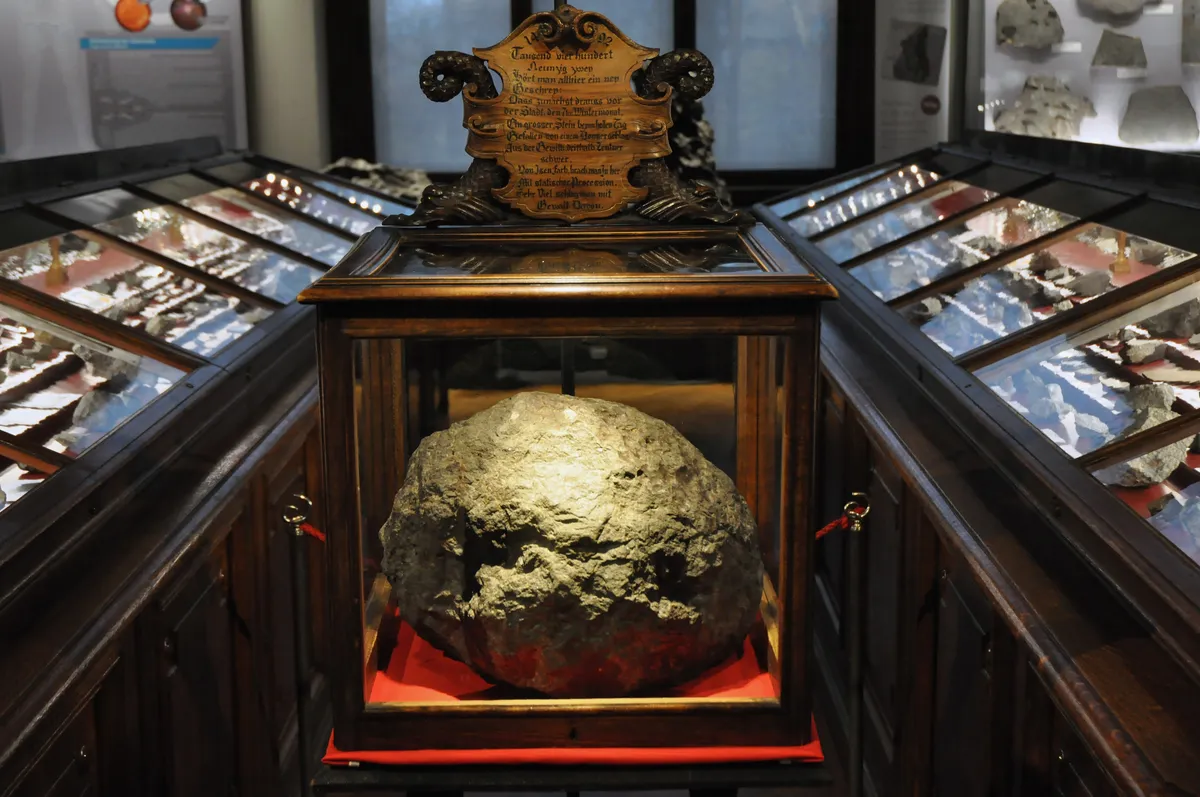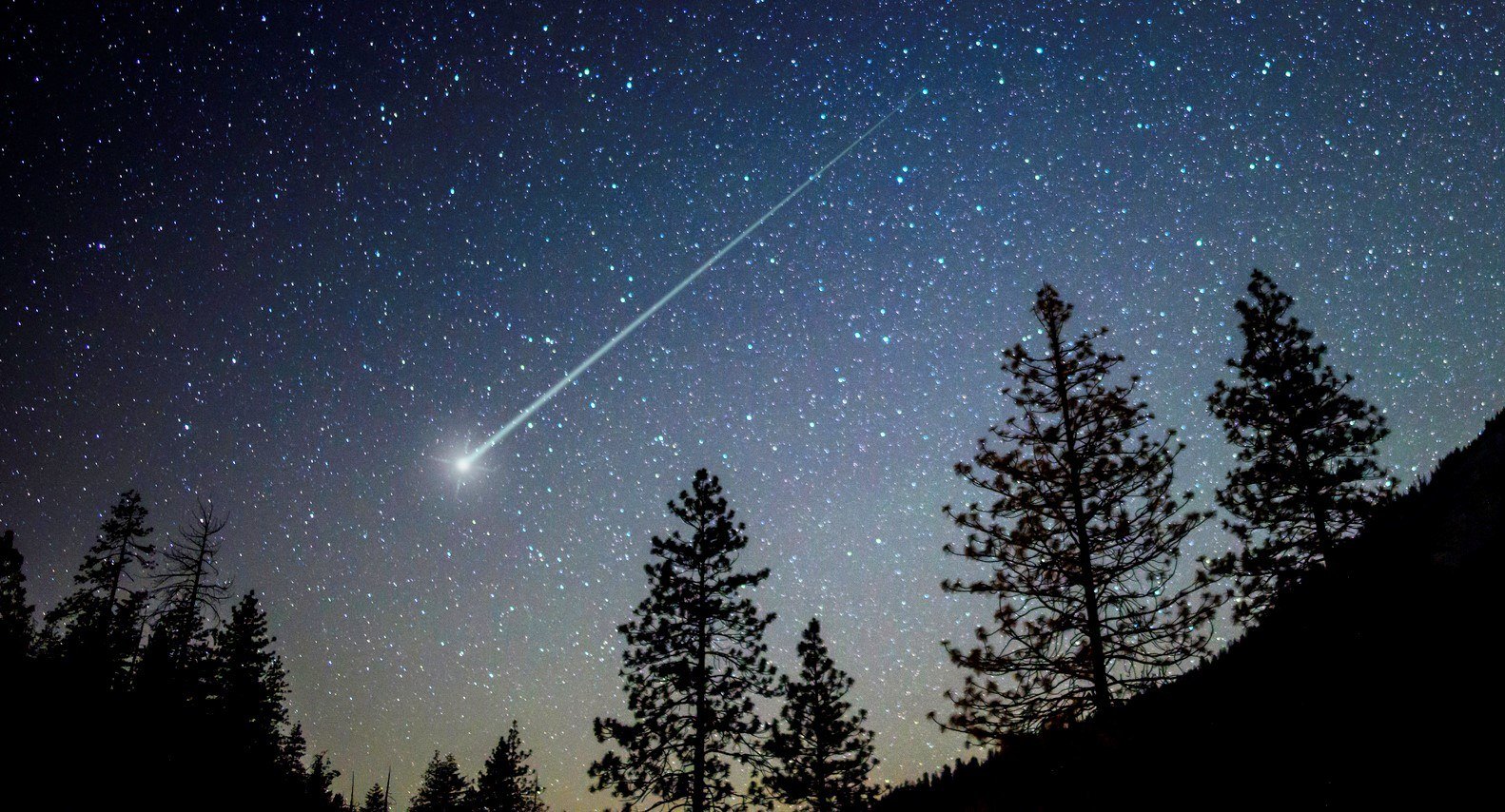Dust fragments (meteoroids) from asteroids or comets that penetrate the Earth's atmosphere quickly become meteor showers. As meteors travel through the atmosphere, they come into contact with air molecules, which causes friction and heat. The majority of meteors are then vaporized by the heat, leaving behind dazzling streaks of light in the sky called shooting stars. The constant barrage of dust and other small objects that constantly bombard Earth occasionally produces lone meteors. Additionally, astronomers can forecast how many meteors will strike Earth's atmosphere and from what direction during regularly scheduled "meteor showers."
Meteor showers may either be magnificent or a complete flop, depending on where the path of particles lands in a given year. A full moon's brightness may overpower a meteor shower's fainter meteors, while a new moon's gloomy sky is excellent for shooting star hunters. The moon can also have a big impact on a meteor shower's visibility. At a height of around 60 miles (or 96.5 kilometers), most meteors are visible. We refer to certain bigger meteors as "fireballs" because they may glow even brighter than Venus, are visible during the day, and can be heard up to 30 miles (48 km) away.
As they travel through the atmosphere, meteors may often achieve speeds of up to 30,000 mph (48,280 kph) and temperatures of roughly 3,000 degrees Fahrenheit (1,648 degrees Celsius). Most meteors disintegrate in the air because they are so small, some of which are smaller than a grain of sand. Larger ones that make it through the atmosphere and land on the surface of the Earth are known as meteorites; these are uncommon. Nevertheless, according to NASA, scientists predict about 48.5 tons (44,000 kg) or so of meteoritic debris arrive on Earth every day.
Depending on the object's composition, speed, and entrance angle, it may or may not disintegrate. Greater stress is experienced by a quicker meteor traveling at an oblique angle (slanting as opposed to straight on). Iron meteors are more resilient to pressure than those composed of stone. Around 5 to 7 miles (8 to 11 km) above, when the atmosphere starts to get thicker, even an iron meteor would typically fragment. It's common to see meteors falling alone to Earth. However, there are some periods of the year when dozens or even hundreds of meteors might appear in a magnificent meteor shower, lighting up the sky. These showers seem to originate from the radiant, region of the sky, then spread out in all directions.
The constellations from which a meteor shower appears to be emanating are given names. Orionid meteors, for instance, seem to come from the powerful Orion constellation, but Perseid meteors appear to come from the Perseus constellation.
- Leonids: The Leonid meteor shower, which may generate a meteor storm that showers the sky with thousands of meteors per minute at its height, is the brightest and most stunning. In fact, when astronomers witnessed one of the Leonids' most spectacular outbursts in 1833, the phrase "meteor shower" was first used. The Leonids are a monthly meteor shower that appears in November, but their most stunning display only occurs around 33 years apart; the last time it did so, in 2002, it is not anticipated to happen again until 2028.
- Perseids: The Perseid meteor shower, which is connected to the Comet Swift-Tuttle, which takes 133 years to round the sun, is another shower worth staying up for. Every year in August, Earth travels through the comet's orbit. Despite being less energetic than the Leonids, it is the year's most popular meteor shower, reaching its apogee on August 12 with more than 60 meteors per minute.
- Orionids: Halley's comet, which circles the sun every 75 to 76 years, emits meteors that are part of the Orionid meteor shower. Every year in October, the Orionid shower, which may last up to a week, gives patient spectators a spectacle of 50 to 70 shooting stars every hour at its height.
- Quadrantids: The 2003 EH1 asteroid, which some scientists believe was once a piece of a comet that disintegrated years ago, left behind the debris that is responsible for the Quadrantid meteor shower. Early in January, the debris hits Earth's atmosphere and puts up a short spectacle for astronomers and other onlookers.
- Geminids: The Geminid meteor shower, like the Quadrantids, was caused by asteroid dust, but this time it was a near-Earth asteroid called 3200 Phaeton. Since comets often produce meteor showers, the Quadrantids and Geminids stand apart from other meteor showers due to their asteroid progenitors. Up to 40 meteors may be seen shooting out of the Gemini constellation an hour during the Geminids, which peak in December.
The Lyrids, which have been documented for more than 2,000 years, and the Eta Aquarids, which are also Halley's comet leftovers, occur in late April and May, respectively.
Tips to observe the Meteor shower
 | ||
| To best see a meteor shower, go to the darkest possible location and lean back and relax. (Image credit: Future) |
The most stunning meteor showers may best be seen by residents of the Northern Hemisphere. For instance, the area of the sky where the January Quadrantids shower emerges is directly below North America. The likelihood of viewing a nice meteor shower can be diminished by a bright moon, which drowns out all but the brightest meteors. Local light pollution also reduces viewing opportunities, thus the ideal spot to see a meteor shower is outside in a rural area.
When the section of the Earth you are standing on faces the direction of Earth's orbit, it is ideal to watch meteor showers in the early morning hours. On the other side, there are fewer meteors in the late evening hours. Depending on when Earth will cross a comet or asteroid's path, meteor showers can be seen at various times of the year. Some meteor storms only occur once or twice in a lifetime, while others only emerge over a period of several years and are some of the finest displays.
A clear view of meteor showers might sometimes be hampered by the weather. Meteor showers in the summer are more eagerly awaited than those that occur in the winter because a clear sky is a gift to night owls.
Meteors in history
 |
In the past, stars and other celestial bodies evoked superstition and were connected to religion and deities. However, misconceptions regarding meteors persisted longer than they did for the majority of other astronomical phenomena.
Long ago, it was believed that meteorites the parts that reach Earth were sent there as gifts from angels. Others believed that the gods were expressing their wrath. Many thought they fell from thunderstorms until the 17th century (they were nicknamed "thunderstones"). The oldest known reported and still survived meteorite in Europe, the "Thunderstone of Ensisheim" is a well-known specimen of a stony meteorite that struck Earth on November 7, 1492.
The idea that stones might fall from the sky or the clouds was contested by many scientists, and frequently they disregarded eyewitness claims of such events.
According to the New England Historical Society, a fireball erupted over Connecticut in 1807, and many meteorites fell. By that time, the first few asteroids had been found, and a new hypothesis had developed that claimed meteorites were fragments of asteroids or other planets that had collided with them. (A still valid hypothesis.)
Earth Impact
 |
When meteorites do strike the ground, they do so at speeds that are approximately half those at the entrance and create craters that are 12 to 20 times larger than their own. On Earth, craters form similar to how they would on the moon or any other rocky planet. Bowl-shaped craters are produced by smaller objects. Larger hits result in a rebound that shapes a central peak, and rim slippage shapes terraces. The biggest impacts create basins, and many rebounds result in various interior peaks. On February 18, 1948, a meteorite the size of a golf ball that was retrieved in the United States crashed in a wheat field in southern Nebraska. According to the meteorite recovery firm Meteorite Recon, witnesses observed a massive fireball in the afternoon that was followed by a sound of a jet engine (opens in new tab). The meteorite was discovered 10 feet (3 meters) beneath the surface of the earth. It was 2,360 pounds heavy (1,070 kilograms). The most well-known meteorite crater in the country is in Arizona and goes by the incorrect names of Meteor Crater and Barringer Crater. According to the Lunar and Planetary Institute, the crater was created about 50,000 years ago when a huge iron meteor with a diameter of between 98 feet (30 meters) and 164 feet (50 meters) struck the Colorado Plateau in northern Arizona.
Large meteors have the potential to erupt above the surface, igniting, and causing extensive fire and explosion damage. The Tunguska event, which took place in 1908 in Siberia, is what is known as this. Witnesses observed a ball of fire race through the sky on June 30, 1908, from hundreds of miles away, indicating that the meteor hit the atmosphere at an oblique angle. The explosion caused the ground to shake violently enough to shatter windows in adjacent communities and released scorching winds and loud sounds. For several days, tiny particles that were thrown into the atmosphere lighted up the night sky. Since no meteorite was ever discovered, many experts first believed that a comet was to blame for the destruction. The current accepted theory states that a meteor explosion occurred close above the surface.
On February 15, 2013, a 17-meter rock burst 12 to 15 miles above the Earth's surface above Chelyabinsk, Russia, causing damage to structures and injuring over 1,000 people. The explosion that resulted was 30 to 40 times more powerful than the atomic bomb unleashed on the Japanese city of Hiroshima during World War II, according to a statement by Peter Brown of the University of Western Ontario in Canada. Even while the Russian incident raised attention to the potential risk that space rocks pose to Earth, most meteors don't actually inflict that much harm. Nevertheless, NASA and other organizations closely monitor all asteroids that are visible from Earth and are actively involved in finding as many asteroids as they can, particularly the bigger asteroids that (theoretically) represent the greatest threat to Earth. To determine if an asteroid may collide with Earth in the future, its orbits are mapped and followed. Although no object that poses an immediate hazard has been discovered, NASA continues its search and updates the Small-Body Database Browser with its findings.




0 Comments